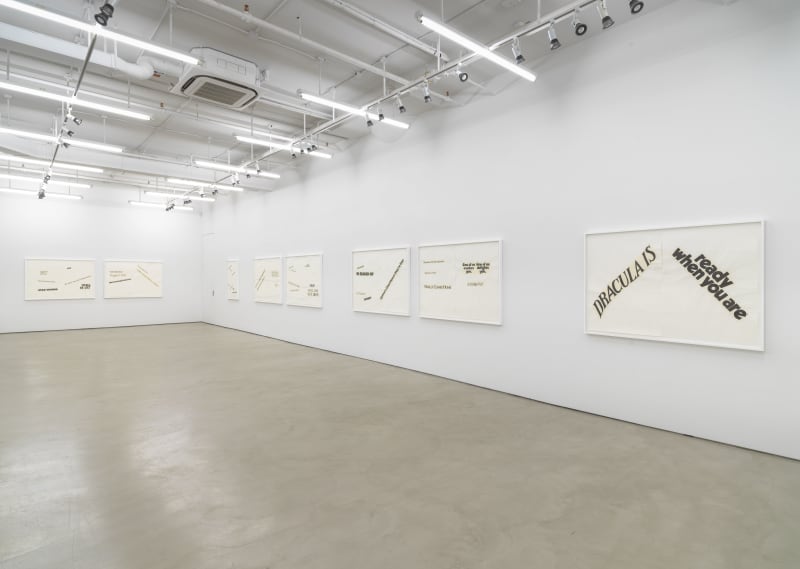Lorraine O'Grady: Cutting Out CONYT
Alexander Gray Associates presented Cutting Out CONYT, an exhibition of new work by Lorraine O’Grady (b.1934). Featuring a selection of prints from Cutting Out CONYT (1977/2017), in O’Grady’s words, the show revealed her ongoing commitment to “establishing the diptych as a ceaseless conversation of difference.”
Cutting Out CONYT returns to O’Grady’s 1977 work, Cutting Out The New York Times (CONYT), which consists of 26 found newspaper poems made between June 5 and November 20, 1977 from successive editions of the Sunday Times. Building on the 1977 series’ successful transformation of public language into private, in Cutting Out CONYT, O’Grady repurposes the collages to achieve a failed goal of the original work: the creation of what she terms “counter-confessional” poetry. Cutting Out CONYT culls the poems and reshapes the remains into 26 new works that adopt a form the artist refers to as “haiku diptychs.” Each of the haiku takes as its source a single 1977 poem. By concentrating and refining the original series’ voice, Cutting Out CONYT serves as a bridge between O’Grady’s early and later works. As she explains, “Making it has allowed me to maintain the tensions between my more explicit voice and my less explicit voice in a way that feels fruitful to me.”
These two voices, which O’Grady has alternately identified as “narrative/political,” “expressive/argumentative,” “inner-directed/outer-directed,” and “post-black/black,” inform all of her work. With the quip, “I was ‘post-black’ before I was ‘black,’” she characterizes her artistic trajectory from the 1970s into the 1980s as an evolution from producing deeply personal works imbued with her identity to more overtly politically motivated ones. As a result, like its CONYT source material, Cutting Out CONYT references what O’Grady describes as “a diaspora mind, a diaspora experience.” Like other diasporic “new world” artworks, including Rivers, First Draft (1982/2015) and Landscape (Western Hemisphere) (2010/2011), this series is implicitly political. O’Grady expands, “Produced with 40 more years of life and aesthetic experience, I feel that it [Cutting Out CONYT] embraces the mysterious intertwinings of narrative and politics, post-blackness and blackness in a way that Cutting Out The New York Times could not accomplish or even imagine.”
At the same time, Cutting Out CONYT engages with the counter-confessionalism of O’Grady's 1977 poems and transforms it via its diptych format into something distinctly other. Refuting hierarchical binaries through its two-panel presentation, the series insists on both/and rather than either/or. Its structure allows O’Grady to question apparent oppositions between her voices while maintaining their productive tensions, siting her work in the interstitial space between personal and political, inner and outer, and post-black and black. Ultimately, as she summarizes, “There was no extrication of the personal from the political, because these qualities were not opposites but obverse and reverse of the same coin.”


